|
You are not your golf performance, but you are your golf potential. Huh? What do I mean by this strange and ambiguous statement, and why is it important? I mean that you are not your golf score or your golf swing when you are having a bad day—or even a good day, it is something you do, its called the performance, and it is not who you are, and it’s not even close to describing your potential for continuously improving you golf score. At Pro Tour Golf College we are very fortunate to work with a lot of very good golfers who aspire to be top level amateur golfers or even professional golfers, and one of the things that we truly believe is that every golfer we work with has the potential to improve as long as they don’t define themselves by their current results. This is not easy to do as it sounds, but is essential for making progress with your golf. Your result on the day--the score you write on your score card is not who you are, and it's not the barometer you should use to define your overall ability. You golf scores can improve because you can keep upgrading your ability. Remember this word "ability," more about it later. Have a good look at Adam Scott’s golf score behavior (below) from one round to next on the PGA Tour in 2014. Does it look balanced and consistent to you? Far from it right? If Adam defined his overall potential by his bad rounds of golf he more than likely would have given up playing golf years ago. He knows that for every poor score he has he knows and believes that he has the potential to play a lot better. The Only Ability that Matters is Score Bounce-Back Ability You can clearly see that Adam's golf score behavior from round to round is erratic and inconsistent and moves up and down just like a roller coaster with many highs and lows in it. But look closely at the score behavior and you will notice that his real ability is to keep bouncing his high scores to lower scores. Remember this. Can you see how many times over the season he produced a high score and bounced back with a lower one? That's the reason his scoring behavior looks like it does, it's because of his consistent ability to produce lower scores after higher scores. 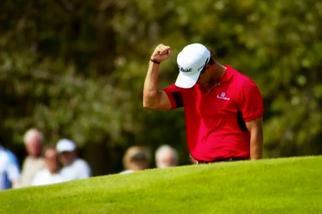 The white line running through the center of his performance line is the par of the courses he played over the season. Notice the par line has less highs and lows, which makes sense because the par over a week generally stays the same, which makes the score behavior around it as I said look erratic and inconsistent. The Golf Score Performance Gap Your golf score results from one round to the next is the one variable in the performance mix that will continually change, no matter how good you get. Your golf scores will always behave like a roller-coaster that travels up and down a track, as opposed to the way a train travels along a relatively flat and level piece of track. But the real key to interpreting this erratic score behavior is to understand that in Adam's case his scores operate within a 15 shot window. That is, his highest score for the season was a 77 and his lowest score was a 62, and all his golf score behavior operated within this 15 stroke window. Now this might surprise you to learn that there’s so much difference between his highest score and his lowest score especially since he is one of the best golfers in the world, but this is actually quite normal with all professional golfers, and even average amateur golfers.  Narrowing Your Golf Score Performance Gap What was the stroke difference between your highest score and lowest score over the whole season last year? Why is this important? Well, it’s important because it perfectly expresses the reality of playing competitive golf, that performances, results or the outcomes you produce from round to round will vary widely, and yet, you need to continually remind yourself that there's always potential to improve by narrowing the gap between your high scores and your low scores. Your best strategy for reducing the width of your golf score performance gap is to analyse your higher scores and look for the types of shots you play during the round that tend to increase your score average on a hole thus leading to higher scores. For example; many advanced and elite amateurs hit one or two wide tee-shots during a round that often lead to double bogeys and worse. What is your golf shot 'Achilles Heel' during a round? Develop Your Back-Up Scoring Ability to Improve Your Bounce-Back Work on lowering your high score average by building an effective back-up scoring ability because you need to understand that the majority of your rounds are going to be a struggle to score which means you won't be hitting your tee-shots and approach shots to your level of expectation so you will need effective back-up skills that keep your scoring under control. In Adam Scott's case his tee to green game was exceptional over the season but he still missed about 6 greens per round on average each round, however because of his effective scrambling ability from 30 yards and in, and his ability from the sand and in the rough around the greens he was able to convert potential bogeys into pars 50 to 60 percent of the time.  Perth and Jakarta Perth and Jakarta Adam Scott like many successful professional golfers had many low rounds over the course of his season, but he also had some higher rounds. However because he works hard on developing and honing his back-up scoring skills to improve his bounce-back scoring ability his roller-coaster of golf scores over a season adds up to a very low scoring average in tournaments. His scoring average (actual) over the 2014 season ended up at 69.49 and earned him more than 4 million dollars in the process, and that is what ultimately counts in professional golf. So get to work on developing your bounce-back scoring ability by improving your back-up scoring skills so you can narrow the performance gap between your highest and lowest golf scores and we guarantee that you will start to score lower more often and get ever closer to your ultimate scoring goal. Lawrie Montague and David Milne - Pro Tour Golf College The Professional Golf Tour Training College The 3 Step Golf Swing Improvement Model That Will Help You Fast-Track Your Way to Lower Golf Scores19/3/2015
"I never lost my talent, I just forgot how to play"..."Its listening to too many people who think they know what they're talking about and they don't." - Sean O'Hair (PGA Tour Player) on getting his game back on track. If there's one undeniable fact in elite amateur and professional golf its this; elite golfers in their quest for continuous improvement often fall victim to the trap of trying to perfect their golf swing even after they have learned how to play, consequently contaminating their golf swing with a thought virus that eventually strangles the authenticity and originality out of their swing and forever changes the way they play. Kind of depressing to read right? But it's true, many well meaning advanced and elite golfers and their instructors are often doing more harm than good in trying to improve what they have by upgrading it to some super level of performance. Diluting Your Authentic or Original Swing It seems like Tiger Woods has diluted much of the authentic nature of his golf swing right out of existence in his quest to keep getting better.
What can we learn from this? Well the easy answer is don't do what he did, but of course there's always more to it than that. So let's start with an important question. What strategies will you employ from now on to help you make informed decisions that will protect you from destroying your authentic or original golf swing style? When you look at the history of golf and the golfers who have played, one things for certain; every golfer who has ever played this great game has played with an original golf swing style that is unlike any other. Your golf swing is your original or authentic style, your blueprint which is based on the way you have been exposed to the game, and the way you have learned how to play it. If it Ain't Broke it Doesn't Need Fixin' A well meaning and intelligent approach to golf swing improvement doesn't mean that you can be thoughtless or careless about how you go about improving it. An important distinction here is that you can change a golf swing but not necessarily improve it. Every successful male and female golfer has practiced and truly believed in pursuing continuous improvement but it was never at the expense of diluting their ability to play the game. In other words they made smart golf swing changes based on a lot of thought and advice from experts, and only after they completely understood the implications of making a change to their technique would they consider making it or not. In most cases they never made the change, which is usually (in most cases) the most intelligent thing you can do. You see when you have played golf for a long time and are really good at it quite often the changes you need to make are not based on the way your golf swing looks or functions as much as it's about continuous refinements and adjustments to the basic elements that drive your golf swing. These elements are the one's that from day-to-day will have the most influence on how you play golf, elements that you have developed and habituated over your career, such as consistent alignment of your body and club through an effective pre-shot routine, and your golf swing tempo and timing. The 3 Levels of Golf Swing Change; Form, Feel and Flow All golf stroke change must lead towards a recognizable feel that is separate from the actual look of the stroke. This means that it doesn't make sense to perfect the look of your golf swing if you cannot translate that into a feel that you can take to the golf course and let it flow with a high level of trust. Feel is the essence of your authentic golf swing; it is your innate knowledge and awareness of the pressures that your body places upon the golf club, and also the pressures that the club sends back into your body that influence how your swing moves backwards and forwards and collides with the ball. Your feel is as unique as your finger prints and must be protected at all costs. Think of feel as your golf swing awareness and to make a change (without dramatically affecting the feel) you have to decide on the level of change, and also how much that change will affect your ability to still play shots at a competitive level. At Pro Tour Golf College we describe golf swing change with a simple three step approach to help our students to understand the golf stroke change process:
Changing Golf Swing Form or Structure The first level of change is to change one or more components within your existing golf swing structure and you will remember in our last article I described the complexity of the golf swing change process and that what we are talking about is how many change components you are going to install into your existing golf swing architecture. For example, think of structural change as the amount of body parts that need to be recruited, trained and habituated to make the golf swing operate successfully.
The simplest stroke to change is a putting stroke, and the most complex is to change a full swing. When you want to make a change to your golf technique from a putt through to a full swing it will be helpful to begin with the end in mind. What will your golf stroke look like when you have it to where you want it to be? Get clear with your vision around the objective you’re aiming at, and then break the change down into small recognizable and manageable components. Now each part of the stroke needs to fit together like a puzzle, and the repetitions you perform are the glue that binds it and turns it into a recognizable feel that you can repeat. Start by making the change you’re introducing by standing in front of a mirror or window and learn to understand the feel associated with swinging the golf club the way you’re trying to. You do this by repeating the golf swing motion many times each day slowly, deliberately and correctly. This is why it is essential to have the help of a experienced and competent golf instructor to guide you in this improtant part of development process. Your golf instructors primary role is to help you to improve your stroke mechanics, and your responsibility is to practice it and develop it into a recognizable feel, and ultimately into a flow state.  Transfer the Old Feel into the New Feel We explain to our students at Pro Tour Golf College that your feel in your golf swing is just like a map with a starting position and an end position. So your responsibility is to practice in such a way that you develop a very definite pathway that leads consistently to a recognizable feel. You need to understand the new layout or form of your new golf swing with checkpoints along the way, and also trouble spots. When you practice perform the golf stroke very slowly at first to accentuate the correct feel so that you can identify how it differs from your original technique. You will find it helpful to not include a golf ball at the beginning as the golf ball is a distraction that will slow down your improvement process. This is one of the critical mistakes made by many golfers, and even golf instructors. Your mind can only focus on one conscious chunk of information at a time and it is enough just to focus on correct swing motion without having to also hit a golf ball successfully. Involving the ball in your practice at this stage is a recipe for disaster.  With the help of your golf instructor design a routine, a specific drill, or use a training aid that will help you to understand and enhance the new feel as this can accelerate the learning process. Continually notice the feedback about how the change is coming along by videoing your golf swing whilst you perform it in slow motion and then at normal speed. Identify the difference in your old golf swing and your new one and keep adjusting your golf stroke until your old technique is overlaid by the new one. You will never completely lose your old golf stroke pattern, and at times it might even spring back into life, particularly if you stop practicing your new stroke components. There is certainly nothing easy about changing a golf stroke as it requires consistent application and a sharp focus on performing each repetition as correctly as possible for many months. However if you follow my advice and completely learn the three steps I’m suggesting, and you carefully learn the new feel by practicing it enough, you will transfer your golf swing to the final stage in the learning process---the flow state. When you reach the flow state level you will be performing your golf swing confidently, competently and without much thought which will elevate you to a higher level of performance on the golf course and much enjoyment for years to come. We wish you the very best with it. Lawrie Montague and David Milne – Pro Tour Golf College The Professional Golf Tour Training College "We have known professional golfers who have attempted complex swing changes with their golf swing instructor whilst trying to compete in tournaments. This makes not one bit of sense." I was thinking the other day how much easier it would be for serious amateurs and even professional golfers to improve their golf swing if they understood some very simple planning concepts that would make it much easier to determine when to perform work on their golf swing and when not to. Developing and improving your golf swing is more difficult the closer to par you get simply because making changes to golf swings at this level usually means an increase in the amount of mistakes made on the golf course and a score average that starts to climb. Not to mention the hit your confidence level takes. So how do you make changes to your golf swing where you go from not yet competent to competent without dramatically affecting your performances on the golf course in tournaments? If you are a serious golfer then playing in tournaments is a priority for you. Therefore the key to managing the swing change process is to identify the ideal time in your schedule to make the change so that you can be ready to perform when your tournaments come around.  The Swing Change Taper For example, imagine that your tournament season started in March, when do you think would be the best time to work on swing changes in preparation for the start of your season? If the tournaments begin in the middle of March, you should have ceased working on technical changes at least 6 weeks out from your first tournament. That’s right; you need this much time to make the transition from technical skill development into targeting skill (shot-making) development. So how long do you spend in the technical phase to ensure that your change is habituated enough to perform with it? Well it depends, but ideally your swing development process would start at the end of your previous season, so let’s say that your season ended in October, then you would work on your swing change through November, December and January and you’d finish the technical phase by the start of February. You can see that you would be spending fully 12 weeks working on making the changes and giving you enough lead time to develop your shot-making powers prior to competing in your first tournament. Now there is a caveat or cautionary note here. The change to your golf stroke should rate as very low on the complexity scale. That is, the more complex the change (i.e. more elements involved in the change), the longer it will take. 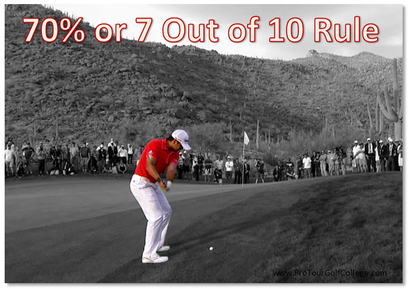 The 70 Percent Rule We have known professional golfers who have attempted complex swing changes with their golf swing instructor whilst trying to compete in tournaments. This makes not one bit of sense. To compete in tournaments you need all your skills to be at a very high level of competence, trust and confidence. In our program we suggest to our students that they reach a 70 percent threshold in skill competency before they take their new swing into battle. When you make a change to your golf stroke (any type of stroke) you will begin at a low level of competence where mistakes are high and confidence and trust is low. This is a normal part of the change process and every golfer has to go through this. But there’s a way to ensure that the change you make is manageable so that you can achieve a high level of competence, trust and confidence within your 18 week development window. Reduce Complexity to Increase Competency When you are planning to make the change to your golf stroke you should sit down with your instructor to determine what needs to change and why. Why you make the change is very important, and the rule here is simple; only make the change if you know that it will lead to a lower score average. Do not make the change to make the stroke look better, it must function better, and ultimately lead to a lower score average. The professional golf tours are full of golfers with great looking golf swings who can’t make nearly enough cuts to make a living on tour. This is a sad reality of elite golf, and from our perspective it doesn’t have to be this way. The point we are making here is make the change to improve your score average, or don’t make the change at all, because once you start on the path to change you can’t go back. Now you may not agree with this advice, but ask yourself why you want to improve some aspect of your golf stroke. I’m sure when all is said and done you want to write lower scores on your score card. We have seen many golfers who had good intentions of changing their golf swing only to discover that they got worse, and worse yet, they never got back to their original performance level.  Keep It Simple So how you manage the change process begins with an informed decision about how much of your stroke needs to change. Think about it like this, if you can change just one aspect of your stroke—say moving a right hand grip position from too weak to neutral, then that would be a change in the low complexity sphere. However, also add a change to how you cock the club on the backswing as well, and the complexity level of the change rises skyrockets upwards. Golfers have an inclination to try to do more to their golf swing to somehow accelerate the change process, but they do this without realizing that the change they thought would take a short time to habituate actually takes a lot longer than they anticipated. And it is a lot more painful mentally and emotionally as well. The old saying of “keep it simple” is good advice here. Keep you change down to one simple and easy to learn chunk of information. Think about it like this, one part of the stroke is one chunk of information, it should be relatively easy to learn and do. If it is relatively easy to learn and do you will learn it faster. Now give it the lead time it needs, in our example we suggested 12 weeks to implement a minor technical change, and fully 6 weeks after that to get it ready for a tournament. Making changes to a golf swing technique need not be difficult or even painful if you plan for the change process well in advance. In our next article we’ll show you a really good way to design your golf swing change process so that you can be ready and able to perform at your best when your first tournament of the season comes around. See you then. Lawrie Montague and David Milne – Pro Tour Golf College The Professional Golf Tour Training College Perth / Jakarta  To follow up on my co-director at Pro Tour Golf College Lawrie Montague's article from last week (which had record shares from our website), Lawrie explained in detail what it really takes to earn a tour card on the Asian Tour and I thought I’d take it to the next step and share with you an interesting scenario. In this scenario you have been a tour professional for five to seven years and you have just won yourself a tour card on a major professional golf tour. And in this case it is a European Tour card. What happens now? I have selected two players who have done just that qualifying at last year's European Tour school in Spain in November. One of them is Anirban Lahiri from India who finished in 17th place, and the other is Aussie Jason Scrivener who finished T18th one stroke behind Anirban. Both players on the final day were on the cut line with a few holes to go and Anirban birdied 2 of his last 5 holes, and Jason birdied one of his last 3 holes to earn their playing privileges for this year.  Anirban is 28 years old and two years older than Jason, but both golfers turned professional at the age of twenty one after distinguished amateur careers. He represented India at international tournaments and played in the Eisenhower Trophy which is also known as the World Amateur Team Championship in 2006, and he won his countries national amateur championship in 2006 and 2007. He turned pro at the end of 2007. Gaining an Asian Tour card in 2008 he has improved each year and by the end of 2014 and had won 5 times on the Asian Tour and amassed earnings of over US $2 million from 2012 to present. So technically he’s a "rookie" on the European Tour, but make no mistake about it, Anirban is a successful and seasoned tournament professional.  Jason on the other hand hails from a country town called Mandurah which is 70 km south of Perth in Western Australia. He won the Australian Junior and Australian Junior Masters in 2007 and also represented his country in international tournaments, turning pro in 2010. He attended the US Tour qualifying school at the end of 2010 but was unsuccessful. The same year he won his card at the Australasian Tour School and in the spring of 2011 gained playing rights on the Canadian Tour. Jason has made steady progress as a tour player making many cuts but not contending in 2012, until he played the Perth International (which is co-sanctioned tournament between the Australasian and European Tour), and in which he finished just outside the top ten in that event. He attended the European Tour School in 2012 and 2013 and while getting to the final stage on both occasions he failed to earn his tour card.  Both of these golfers are very accomplished tour players who rarely miss cuts, with Anirban winning his first three Asian Tour tournaments on home soil before winning the Indonesian Masters in 2014 by one shot with a spectacular eagle on the last hole. Anirban with two more years experience as a professional under his belt compared to Jason is a proven winner and unlike many Asian Tour players he backed himself by going to the annual European Tour School to earn his card instead of hoping to win a co-sanctioned Asian/European tournament and win a 2 year exemption on the European Tour. So what does this have to do with winning a tour card at a top tier tour school? It means that just because you gained a card through the qualifying process you are entitled to enter all the tournaments but not necessarily get to play in every tournament or even some of them. To give you an idea of what I mean, eight tournaments have been played so far this year on the wrap around 2014/2015 European Tour and the golfers who earned one of the 25 European Tour cards on offer have each averaged playing in three tournaments so far. Matthew Fitzpatrick the 2013 US Amateur Champion and low amateur at the British Open in the same year finished T10th at tour school but with sponsor exemptions has played seven out of the eight events. Anirban because of his Asian Tour ranking has played 4 tournaments and Jason has played in 2. After his 11th place finish in South Africa Jason entered every tournament but did not get a start in the next five. The reason for this is that all the top golfers play the three desert swing events, as well as the Malaysian Open and also the True Thailand Classic which are all co-sanctioned so spots in these events are limited. As the record shows Anirban has won two of the four tournaments he has played in (the Malaysian and Indian Opens) and is currently second on the money list with Euro 687,044. Jason on the other hand has made the cut in both events and has banked Euro 23,986 and that includes an 11th place in the South African Open and a T45th in the Indian Open. I think you will agree with me that is a huge difference in prize money won between these two golfers so far? So as we like to do at Pro Tour Golf College let's look at the numbers between these two fine golfers to see where the discrepancy is and how Jason can put into place an action plan to turn his making cuts into making some serious money like Anirban Lahiri has. The table below displays statistics of both golfers and I will highlight the areas that I believe make the difference between these two golfers positions in the Race to Dubai, Anirban is currently 2nd and Jason is in 127th position.  As the table above shows in driving accuracy Anirban looks like he has the edge but you will see that Jason is just in front in greens hit in regulation. The two tournaments that Jason has played in (South African and Indian Opens) have had the narrowest fairways so far, and especially the South African Open where almost no one hit more than 55% of fairways. Jason has a distinct advantage in scrambling and sand saves which has helped him to make almost all the cuts he has played in on the European Tour since 2012 which numbers nine tournaments. An interesting statistic is that the top three in scrambling on the European tour this season Andrew Dodt (78.6%), Danny Willett (77.5%), Rory McILroy (75%) are all winners on tour this season. Alex Noren (74.1%) and Bernt Weisberger (73%) are ranked four and five and have contended and finished in second spot. The area that separates Anirban and Jason is without doubt featured in the two putting stats. There is nearly a three percent difference in greens hit in regulation, Anriban's 76.19% to Jason's 78.7% but there is a clear 2 shots per round (or 8 shots per tournament) difference that Jason is giving up to Anirban in the Putts per greens hit in regulation statistic where Anirban averages 1.71 putts per greens hit in regulation per round and Jason averages 1.90 per round. That is the major difference and a big reason why they sit 125 positions apart on the Race to Dubai. 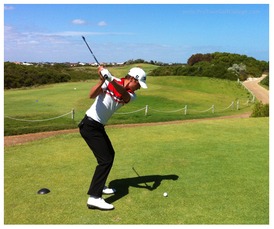 When Jason’s back home in Perth he trains at Pro Tour Golf College and we have assessed him as a good putter who career wise averages 29.4 putts per round. But so far on the grainy greens of South Africa and India he has struggled. In the tournament being played this week (the Joburg Open) Jason opened with a seven under par first round where he had 27 putts but unfortunately for him followed it with a four over round on Friday and missed the cut by one stroke. Anirban is currently ranked 34th in the World Golf Rankings after his two wins and has a full tour card until the end of 2017. Jason ranked 473 in the WGR has to first earn enough money so that when the re rank of players comes around in a couple of months he will be in position to enter and play in more tournaments later in the year. The next step for Jason would be to earn enough to get into the final series where prize money is upwards of Euro 7,000,000 in each tournament . And the final goal for Jason is to finish well inside the top 110 on the money list at the end of the season so he can retain his card for next year and avoid having to go back to the dreaded Tour Qualifying School in November. Best of luck and good golfing to both golfers and we will bring you news of how they are progressing over the coming months. David Milne and Lawrie Montague – Pro Tour Golf College The Professional Golf Tour Training College |
Archives
June 2019
|
Proudly Supported By
Copyright © 2011 - 2018 Pro Tour Golf College
Website Managed By Golf Performance Media
All Rights Reserved
Website Managed By Golf Performance Media
All Rights Reserved


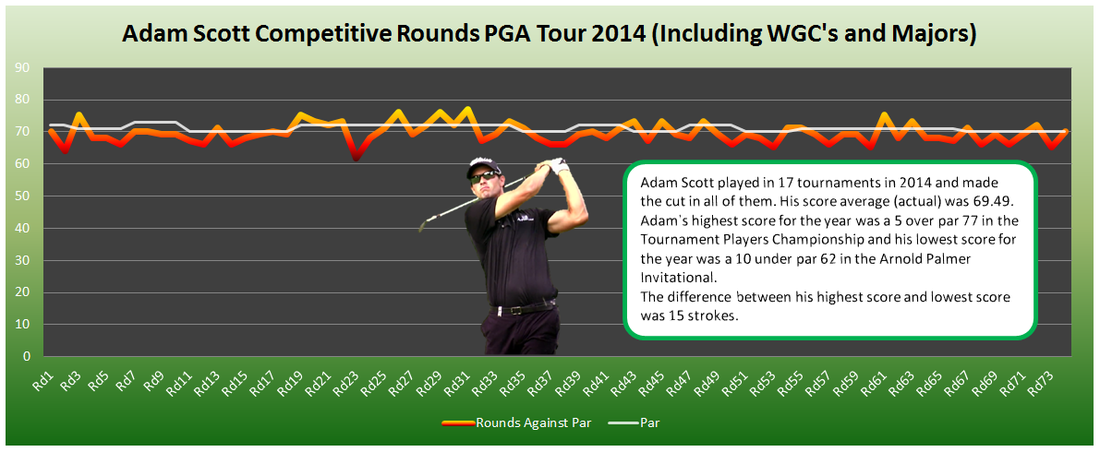







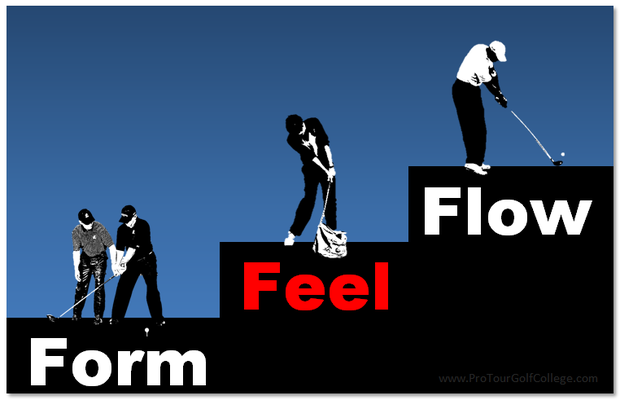


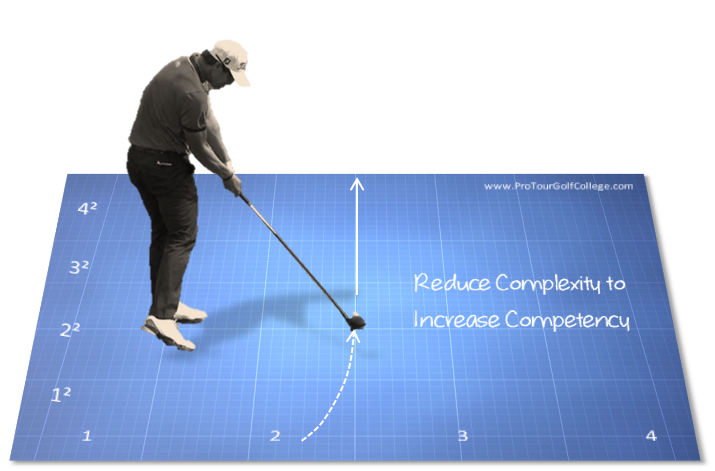



 RSS Feed
RSS Feed



